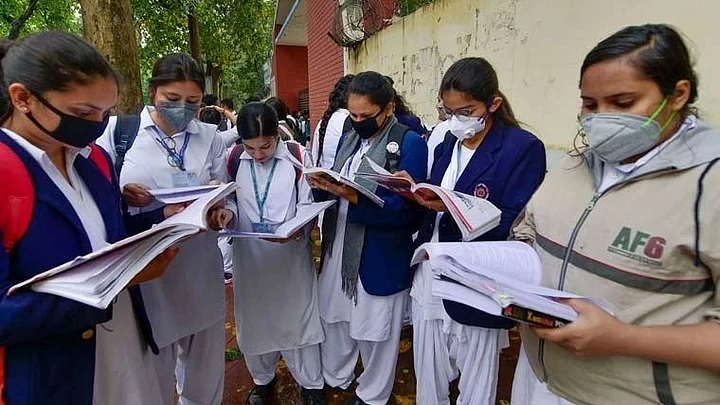In March 2020, we were struck by a pandemic that turned our world upside down. As many as 260 million Indian children have been out of school since then. To borrow a friend’s words, it’s like we were in a really black tunnel, striving to see the light at the end of the darkness.
Our teachers, as always, have been the ray of hope in this darkness. Over the past nine months, many switched entirely to virtual classrooms, maintained WhatsApp groups with parents and sent worksheets to a students’ nearest print shop.
We’ve also seen the power of learning and how the classroom remains a safe and inviting space. Challenges are being met with enthusiasm and stories of passion. In spite of the shared devices and spotty internet connections, more students are now in classrooms compared to the start of the lockdown.
Students are discovering a genuine love for learning, with no one forcing them to join classes anymore except their own curiosity. Little Sahil goes to the terrace of his home in his village every morning to attend classes, covered in blankets due to the cold.
Even after his parents moved back to the village during the pandemic, his passion for learning hasn’t stopped.
Blended Learning
With COVID came a new idea – children can learn beyond school. This could be the light at the end of the tunnel. Perhaps for the first time, this new type of learning could be a true equalizer for all children.
Blended learning is a form of education that combines online educational material and opportunities for online interaction with traditional place-based classroom methods. Blended learning enables us to use technology in and beyond the classroom in a way that meets each child where his/her need is.
It redefines access and exposure – suddenly students have access to the best museums in the world, to any book or idea ever created. It is learner-driven. It puts the student in the driver’s seat, in charge of his or her education, giving significantly more freedom over when, where and how they learn.
While the opportunity is massive, the research for blended learning has been mixed so far. An analysis conducted by the US Department of Education concluded that blended learning environments have the greatest impact in improving student achievement.
At the same time, several schools have tried this in the past and found it hard to implement.
There is an opportunity here to adopt blended learning in the long term and ensure that our students receive excellent education. At the same time, the challenges it poses are also real. The biggest one being access to the internet and devices.
With schools being shut, students who do not have access to a dedicated device and a reliable internet connection are falling back in academic progress. Global studies suggest that these students will lose between 12-15 months of learning this year.
The Way Forward
Going forward, there are some key decisions that we need to make in 2021. First and most important decision would be investing in people.
By recruiting, training and supporting high-quality local talent we can help them migrate to blended learning. The belief that technology can adequately replace teachers is a fallacy. While poor school systems have made sizeable improvements with instructional aids, the investment on teachers is inevitable.
Second, my plea to governments across this country would be to invest in hardware for all students. For schools to successfully drive holistic student outcomes in the short and the medium terms, having a device in every child’s hand would be critical.
An analysis by McKinsey & Co pointed out that regions with a developed infrastructure fare better in Programme for International Student Assessment (PISA) results globally.
Lastly, as we make these transitions, we need to keep child safety at the centre of our decisions. Schools and institutions need to be thinking of guidelines and software to regulate students’ usage of applications.
Let’s go back to the dark tunnel one last time. We’re still there. The path to the light is far, difficult and unclear. We can choose to stay in the dark. We can move ahead blindly, letting the future unfold as it may. Or we can see the light and move swiftly towards a better reality.
Our students need us to make the third choice. To collectively weave a new education for our children, one that enables them to build a new world for themselves and others.
(Shaheen Mistri is founder and CEO of Teach For India. This is an opinion piece, and the views expressed are the author’s own. The Quint neither endorses nor is responsible for them.)
